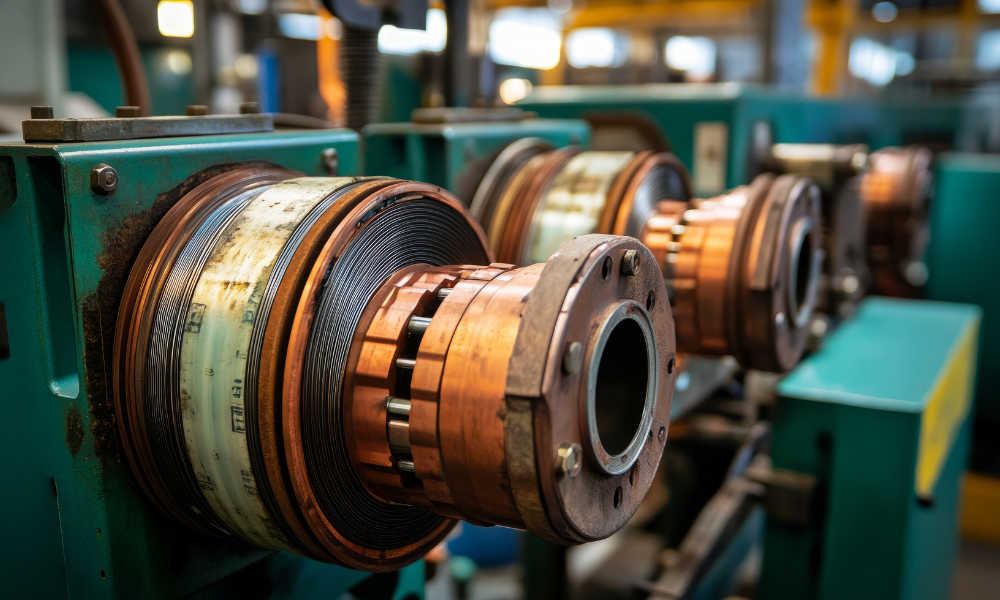Canada's $9.3 billion copper exports to the US could shift as Trump pushes 50% tariff plan

A proposed 50 percent tariff on US copper imports by US President Donald Trump could reshape Canada’s $9.3bn copper trade and directly impact Quebec’s smelting operations and future pension fund strategies tied to industrial supply chains.
According to Natural Resources Canada, the US accounted for 52 percent of Canada’s copper export value in 2023—$4.86bn out of $9.3bn in copper and copper-based products.
Imports from the US totalled $3.07bn.
Canada was also the source of 99 percent of US copper concentrate imports and 17 percent of refined copper imports, as reported by the US Geological Survey.
The Horne Smelter in Rouyn-Noranda, Que.—the country’s only copper smelter—operates within a tightly integrated North American network.
Glencore PLC, the operator, both imports US e-waste as feedstock and ships refined copper back to the US.
A Glencore spokesperson stated that “Canada and the United States benefit from a robust and highly integrated copper supply chain,” and called the situation “an important issue for our business.”
However, as reported by The Globe and Mail, the company declined to disclose export volumes to the US.
Pierre Gratton, president of the Mining Association of Canada, called the tariffs “very concerning” for Glencore, noting its smelter operates on “very small margins, so any increase in costs can be very serious.”
He added in The Globe and Mail that the policy “will hurt US copper producers who sell concentrate to Canada and US manufacturers who purchase Canadian refined copper products,” while possibly helping Chinese refiners.
According to Financial Post, the union representing Horne Smelter workers does not anticipate job losses.
“We have no reason to believe there will be a negative impact on jobs in Rouyn-Noranda at this time,” said Kevin Gagnon, president of the Federation of the Manufacturing Industry union.
He also said the union is uncertain the tariffs will be implemented, adding that “Trump always chickens out.”
Markets reacted swiftly following Trump’s cabinet remarks, where he said, “Today, we’re doing copper. I believe the tariff on copper, we’re going to make it 50 percent.”
According to CTV News, copper prices jumped 8.7 percent to US$5.47 per pound, while US futures spiked 13 percent to a record US$5.654 per pound.
As reported by CBC, the tariff announcement adds to a growing list of Section 232 trade actions targeting metals on national security grounds.
Trump has already imposed similar levies on steel, aluminum, and autos.
A Section 232 investigation into copper imports launched in February is expected to conclude mid-July.
The Mining Association of Canada’s Gratton warned the tariffs could further fragment the North American supply chain, stating they “may inadvertently help Chinese refiners that operate newer, lower cost refineries.”
Some Canadian operations remain insulated.
Teck Resources Ltd., operator of Canada’s largest copper mine at Highland Valley, confirmed to The Globe and Mail that it sends its product to Asia and Europe and does not currently sell to the US.
Taseko Mines Ltd. also reported no US-bound shipments from its Gibraltar mine, Canada’s second largest.
However, Taseko stands to benefit from the new US pricing environment.
CEO Stuart McDonald told the Financial Post the company is completing a $300m copper mine in Arizona that is expected to open within a year.
“Tariffs are going to effectively create a market where copper prices inside the US are 50 percent higher than the rest of the world,” he said. He added that the company could benefit from premium pricing once the new mine opens.
McDonald cautioned that while the tariffs might help producers, they could burden US industries with higher metal costs. “The negative side of the tariffs, in the short term, is that US industry is going to be paying more for its metal,” he said. “That’s the conundrum.”
Citigroup analyst Tom Mulqueen predicted that key trading partners such as Canada, Mexico, and Chile could eventually receive a reduced tariff rate of 25 percent.
He told Financial Post that there may be enough copper stockpiled in the US “to displace any import requirements” through the rest of 2025, potentially dampening the short-term impact of tariffs.
Mulqueen also warned the move could be a prelude to broader levies on other metals and critical minerals, including nickel, lithium, and zinc.
Ottawa has responded by reinforcing its procurement policies.
According to CTV News, Finance Minister François-Philippe Champagne sent letters to provincial, territorial, and municipal leaders urging them to adopt “strategic procurement policies” that support domestic steel and aluminum.
“A co-ordinated approach across jurisdictions would send a strong signal of unity and reinforce Canada’s resolve to secure fair treatment for our businesses and workers,” the letter said.
According to CBC, Canada is not currently subject to the broader global tariffs delayed to August 1, but Prime Minister Mark Carney has committed to pursuing a bilateral deal with the US by July 21.
A spokesperson for Carney’s office declined to comment until Trump signs an executive order.



